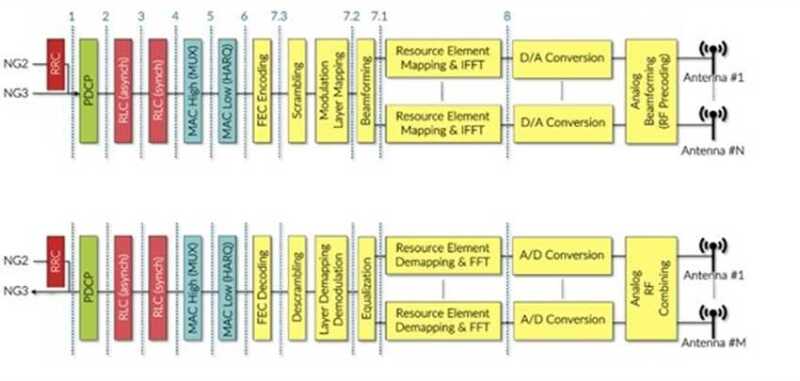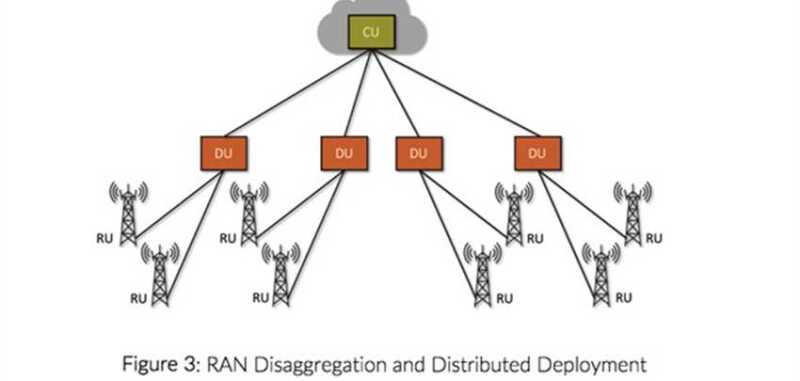Open RAN is a term in vogue in 2021 but more so an important underlying movement in the telecom space. For the first time, the new cellular standard, 5G, is being developed with the understanding that the network needs to be more adaptive and dynamic to optimally support a variety of new business verticals, such as low-latency, massive machine-type communications (M2M), way beyond the traditional limits of voice and broadband data of the past.
Telecom operators are transforming their deployment strategies, based on disaggregation, NFV, SDN and cloud principles to allow for rapid innovation and onboarding of new services with a goal of lowering capex/ opex spending.
While the transformation in the operator deployment strategies has already spurred significant changes in the cellular core towards a disaggregated, user plane-control plane separated, services-oriented architecture allowing for dynamic creation and lifecycle management of use-case optimised network slices, to a large extent, the RAN has remained untouched until recently.
To change this, in 2018 a large group of mobile network operators formed the O-RAN Alliance with the goal of providing an open and intelligent RAN architecture pursuing adoptive, dynamic, highly performant and cost-effective operation.
SD-RAN is built around open platform and interfaces, disaggregation, virtualisation, software-defined control and cloud principles. The software-defined programmability of RAN has been pursued in the open source community since 2015.
Disaggregating the Cellular RAN
In cellular networks, the RAN provides wide-area wireless connectivity to mobile devices. It’s two fundamental tasks are:
1.Converting IP packets to physical Layer packets suitable for transmission over the time-varying mobile channel using packet and signal processing techniques.
2.Conducting radio resource management (RRM) control to determine how best to use and manage the precious radio resources to provide connectivity to active end devices.
The disaggregation of the RAN effectively splits the RAN protocol stack so that the individual components can be realised independently. This aims to deal with the challenges of high total cost of ownership, high energy consumption, better system performance by intelligent and dynamic radio resource management, as well as rapid, open innovation in different components while ensuring multi-vendor operability.
3GPP has already defined a number of disaggregation options, as summarised below.

Central Unit (CU) will centralise the “packet processing functions,” realise them as virtualised network functions running on commodity hardware, and place them in geographically centralised telco edge cloud locations
Distributed Unit (DU): will realise “baseband processing functions” across cell sites, realise them as virtualised network functions running on commodity hardware, allowing for possible hardware acceleration using FPGAs etc.,
Radio Unit (RU): will enable geographical coverage using “radio functions” across antenna sites, realised on specialised hardware
The disaggregation solution needs to be flexible, in that, based on the use-case, geography, and operator choice, in addition to the CU–DU-RU split, it should also allow for the possibility of realising the base stations as i) two disaggregated components: CU and DU+RU, and/or CU+DU and RU, or ii) all in-one: CU+DU+RU.

The O-RAN Alliance is developing open specifications for the interfaces between the disaggregated components.
Within this process, they have selected a subset of the 3GPP RAN split options to focus on. Specifically, O-RAN describes the RU (called O-RU) as the logical node hosting Low-PHY layer and RF processing (e.g. split option 7.2 in Figure 1), the DU (called O-DU) as the logical node hosting RLC, MAC and High-PHY layers (e.g. split option 2), and the CU (called O-CU) as the logical node hosting RRC, PDCP and SDAP layers4.
In addition, O-RAN is pursuing control-user plane separation (CUPS) for the CU, further disaggregating it into CU-U, the logical node hosting the user-plane part of the PDCP protocol and SDAP protocol, and CU-C, the logical node hosting the control-plane part of the PDCP protocol and the RRC protocol.
Software-defined control of the RAN will allow for:
Democratisation of the innovation within the RAN: The control plane–user plane separation and open, clearly-defined interfaces between the disaggregated RAN components as well as between the RAN control and associated control applications, allow for innovative, third party control solutions to be rapidly deployed regardless of which vendors have provided the underlying hardware and software solution.
Holistic control of Radio Resource Management: Software-defined control of RAN will allow for logically centralised (within limited-geography) control of radio resource management. Then, for a given active user, using innovative control applications, operators are empowered to conduct dynamic selection of any radio beam within reach across all network technologies, antenna points and sites using a global view that minimises interference, and thus maximises observed user quality of experience. This can be achieved by applying carrier aggregation, dual connectivity, coordinated multi-point transmission as well as selection of MIMO and beamforming schemes using a global view of the wireless network.
Use-Case Based Management of the RAN: Software-defined RAN control will allow for the integration of performance-based decisions with policy-based constraints, with such constraints to be dynamically set, based on use cases, geographies, or operator decisions.
The O-RAN Alliance is developing a Reference Design specification for a disaggregated, open, virtualised, and intelligent RAN architecture. O-RAN builds on a subset of 3GPP specification options and further describes specifications for the corresponding components and interfaces for the disaggregated RAN architecture. In this Reference Design, as illustrated in Figure 6, all interfaces will be clearly specified to allow for inter-operability.

The ONF’s SD-RAN Exemplar Platform is consistent with the O-RAN architecture using the following implementation choices:
Includes open source implementations of O-DU, O-CU-UP and O-CU-CP,-The solution will implement O-CU-UP using P4,-The solution will include an open source Near-Real Time RIC Controller implementation that is based on ONF’s ONOS
Expands on the E2 interface to allow for scheduler control and network slicing and contribute this expansion back to O-RAN for inclusion in the specifications
Is interoperable with third party RUs,-The solution will leverage COTS and white box P4-programmableswitches
Uses Aether5 as the Virtualisation Layer, VIM and Infrastructure Management Framework
The high level ONOS RIC architecture

The collective efforts of the ONF, O-RAN Alliance and TIP over the past three years are expressly built to serve the carrier community with an expanded menu of open source “Open RAN”/SD RAN architectures that will work with their mobile infrastructure well into the future.





